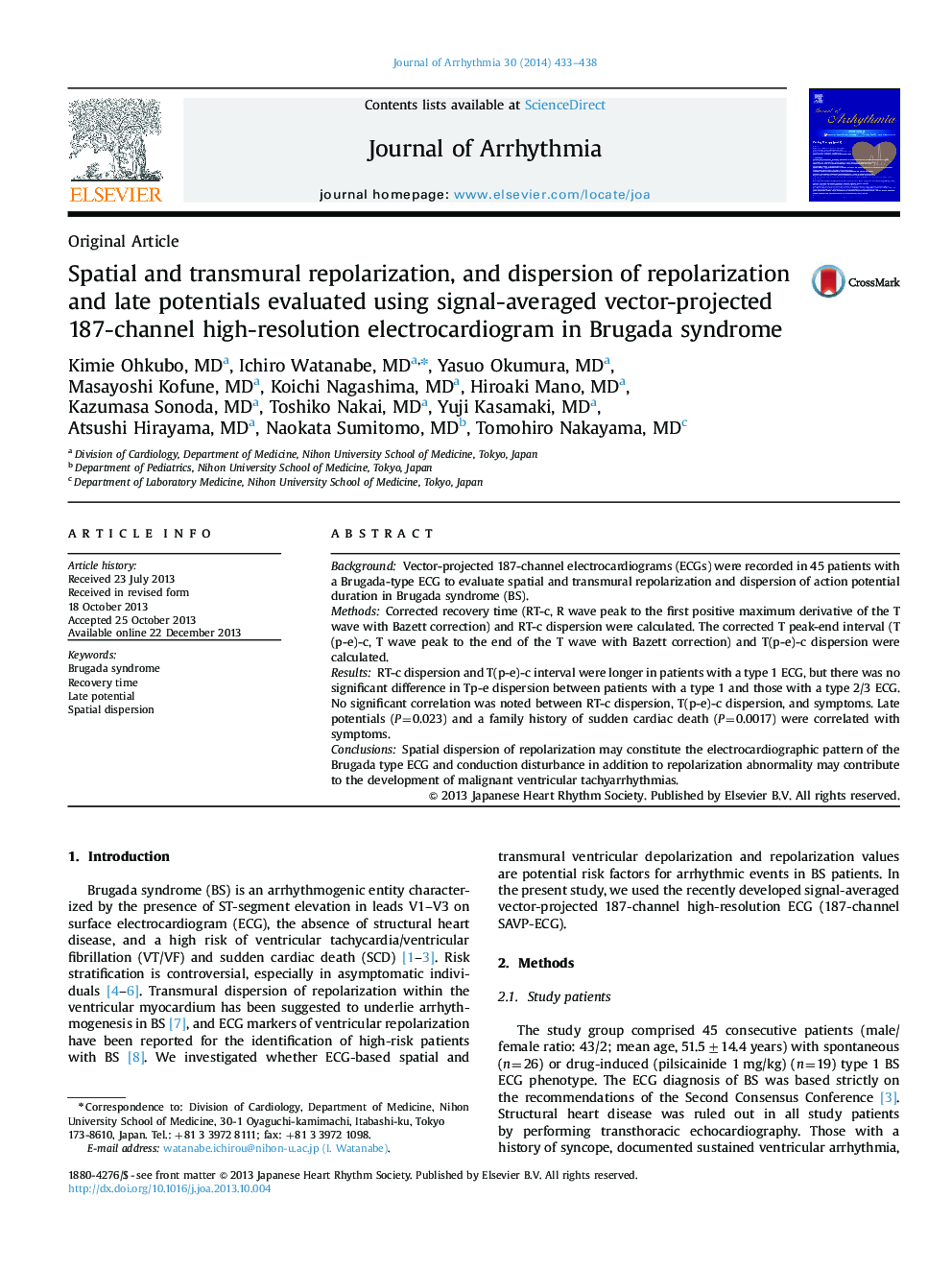| Article ID | Journal | Published Year | Pages | File Type |
|---|---|---|---|---|
| 2957592 | Journal of Arrhythmia | 2014 | 6 Pages |
BackgroundVector-projected 187-channel electrocardiograms (ECGs) were recorded in 45 patients with a Brugada-type ECG to evaluate spatial and transmural repolarization and dispersion of action potential duration in Brugada syndrome (BS).MethodsCorrected recovery time (RT-c, R wave peak to the first positive maximum derivative of the T wave with Bazett correction) and RT-c dispersion were calculated. The corrected T peak-end interval (T(p-e)-c, T wave peak to the end of the T wave with Bazett correction) and T(p-e)-c dispersion were calculated.ResultsRT-c dispersion and T(p-e)-c interval were longer in patients with a type 1 ECG, but there was no significant difference in Tp-e dispersion between patients with a type 1 and those with a type 2/3 ECG. No significant correlation was noted between RT-c dispersion, T(p-e)-c dispersion, and symptoms. Late potentials (P=0.023) and a family history of sudden cardiac death (P=0.0017) were correlated with symptoms.ConclusionsSpatial dispersion of repolarization may constitute the electrocardiographic pattern of the Brugada type ECG and conduction disturbance in addition to repolarization abnormality may contribute to the development of malignant ventricular tachyarrhythmias.
